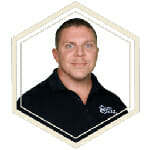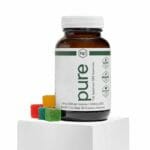If you’ve explored CBD products, you’ve likely encountered the term “entourage effect” without fully understanding its significance. This phenomenon could be the key to unlocking the full potential of your CBD experience. The entourage effect describes how cannabinoids, terpenes, and other cannabis compounds work together synergistically to enhance therapeutic benefits beyond what any single compound could achieve alone. This guide will demystify this complex interaction, explain why it matters for your wellness journey, and help you make more informed decisions about CBD products.
As researchers continue to unveil the intricate relationships between cannabis compounds, understanding the entourage effect has become essential for anyone seeking optimal results from CBD. Drawing from the latest scientific research and practical applications, we’ll explore how this synergistic relationship works and what it means for your health and wellness goals.
The Science Behind the Entourage Effect
Origins of the Concept
The term “entourage effect” was first introduced to the scientific community in 1998 by Israeli researchers Raphael Mechoulam and Shimon Ben-Shabat. Their groundbreaking research suggested that cannabis compounds work better together than in isolation, creating enhanced therapeutic effects through their combined action. This concept fundamentally changed how we understand cannabis and its effects on the human body.
The researchers observed that whole-plant extracts often produced more significant results than isolated compounds, leading to the hypothesis that multiple cannabis components create synergistic interactions. This discovery challenged the pharmaceutical approach of isolating active ingredients and pointed toward a more holistic understanding of plant medicine.
The Endocannabinoid System and Synergy
To comprehend the entourage effect, you need to understand its relationship with your body’s endocannabinoid system (ECS). This vital regulatory network consists of receptors (primarily CB1 and CB2), endocannabinoids produced by your body, and enzymes that help create and break down these compounds.
The ECS helps maintain homeostasis or balance across multiple bodily functions including mood, sleep, appetite, pain sensation, immune response, and more. When you consume CBD and other cannabis compounds, they interact with this system in various ways. What makes the entourage effect remarkable is how these compounds modulate each other’s activity within the ECS.
Some compounds enhance the binding affinity of others to receptors, while certain combinations inhibit enzyme breakdown of beneficial endocannabinoids. Various terpenes can influence how cannabinoids cross the blood-brain barrier, and together, they can target multiple physiological pathways simultaneously. This complex interplay results in effects that differ from what would be expected from each compound in isolation.
Key Players in the Entourage Effect
Cannabinoids Beyond CBD and THC
While CBD and THC receive the most attention, cannabis contains over 100 different cannabinoids, each with unique properties. These lesser-known compounds contribute significantly to the entourage effect. CBG (Cannabigerol), often called the “mother cannabinoid,” is showing promise for inflammatory conditions and neurological disorders. CBC (Cannabichromene) has demonstrated anti-inflammatory and pain-relieving properties, particularly when combined with other cannabinoids. CBN (Cannabinol), which appears when THC ages, may enhance sleep quality when working alongside other cannabinoids and terpenes. THCV (Tetrahydrocannabivarin), unlike THC, potentially suppresses appetite and may help regulate blood sugar levels.
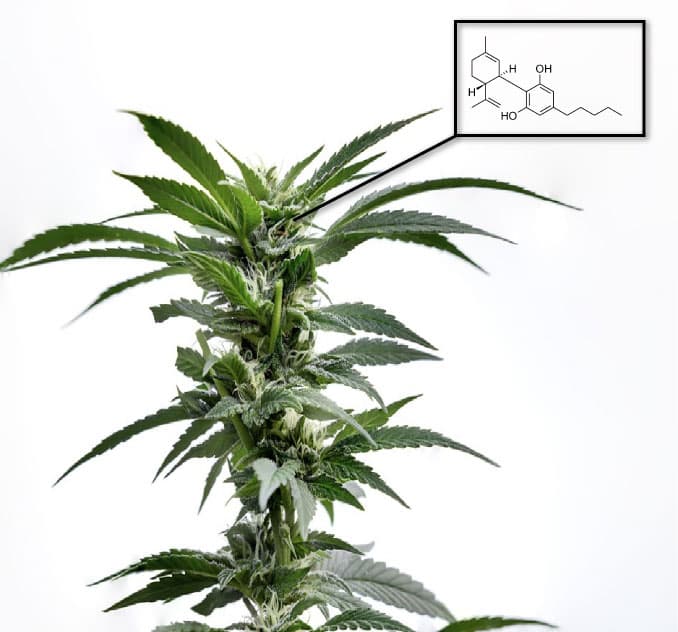
When these cannabinoids work together, they can target multiple receptors and biological pathways simultaneously, creating a more comprehensive therapeutic response. This multi-target approach explains why full-plant extracts often produce different effects than isolated compounds, even at similar concentrations of the primary cannabinoids.
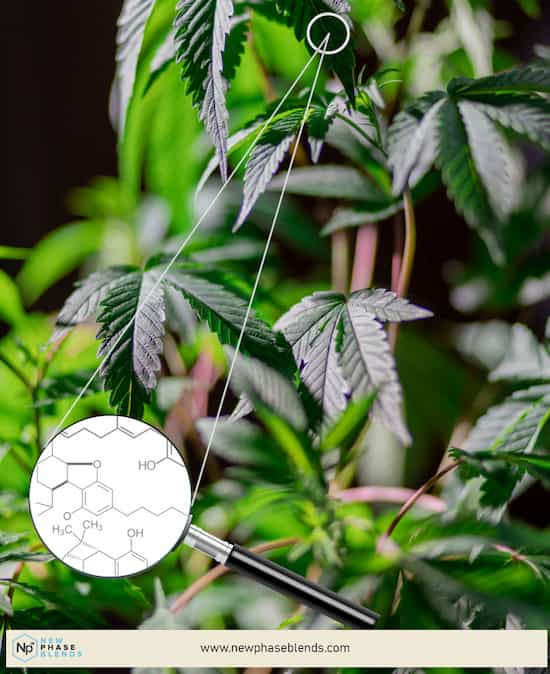
The Critical Role of Terpenes
Terpenes are aromatic compounds responsible for the distinctive smells of cannabis and many other plants. Beyond providing scent, these molecules play a crucial role in the entourage effect. Myrcene, the most abundant cannabis terpene, enhances cell membrane permeability, potentially allowing cannabinoids to take effect more quickly. Limonene, with its citrus scent, may elevate mood and reduce stress when combined with cannabinoids. Pinene counteracts some of THC’s memory impairment effects while potentially improving airflow to the lungs.
Research indicates that terpenes can modify how cannabinoids interact with your endocannabinoid system, amplifying benefits and sometimes reducing unwanted effects. They essentially “direct traffic,” influencing how cannabinoids affect various receptors and systems throughout your body. This directional quality makes terpenes far more than just aromatic compounds—they’re active participants in the therapeutic process, helping guide cannabinoids to their most effective targets within the body.
Flavonoids and Other Compounds
Cannabis contains approximately 20 flavonoids—powerful antioxidants that contribute to the plant’s color and provide additional therapeutic properties. When present alongside cannabinoids and terpenes, these compounds further enhance the entourage effect through their anti-inflammatory and neuroprotective qualities.
Other compounds, including plant waxes, alkaloids, and phenols, while present in smaller amounts, may also influence how your body processes and responds to cannabinoids. This intricate botanical complexity explains why whole-plant extracts often produce different results than isolated components. The full spectrum of plant compounds creates a chemical symphony where each component plays a specific role in the overall therapeutic effect.
CBD and the Entourage Effect
Full-Spectrum vs. Broad-Spectrum vs. Isolate
When shopping for CBD products, you’ll encounter three main formulations that offer different entourage effect potentials. Full-spectrum CBD contains all naturally occurring compounds from the cannabis plant, including trace amounts of THC (typically less than 0.3%). This complete profile provides the most robust entourage effect, as all compounds work together as nature intended. Many users report more significant relief with full-spectrum products, especially for complex conditions.
Broad-spectrum CBD undergoes additional processing to remove THC while preserving other beneficial cannabinoids and terpenes. This option delivers much of the entourage effect without THC, making it suitable for those concerned about THC consumption or drug testing. It represents a middle ground between full entourage benefits and THC avoidance, though some synergistic potential may be lost in the extraction process.
CBD isolate is pure CBD crystal with all other compounds removed. While offering precise dosing and zero THC, isolates lack the synergistic benefits of the entourage effect. They may require higher doses to achieve effects comparable to full-spectrum products. Understanding these differences helps you select products aligned with your specific needs and preferences, balancing entourage benefits against other considerations like THC avoidance or dosage precision.
How CBD Interacts with Other Cannabinoids
CBD’s relationship with other cannabinoids illustrates the entourage effect in action. For example, CBD can modulate THC’s psychoactive effects by blocking some of its receptor activity. This interaction potentially reduces anxiety and paranoia sometimes associated with THC while preserving therapeutic benefits.
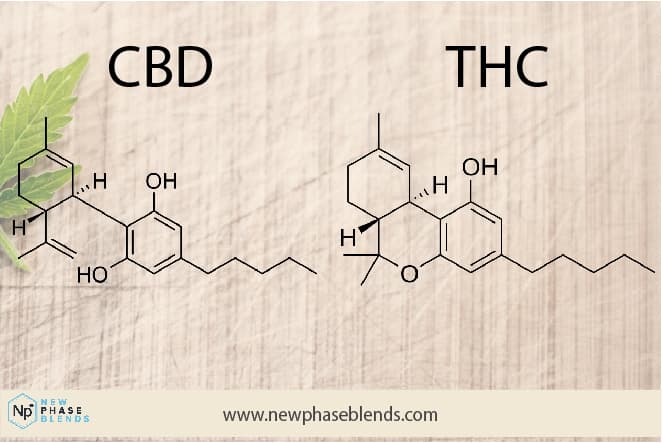
CBD also influences how your body processes endocannabinoids—compounds naturally produced by your body. By inhibiting the enzyme (FAAH) that breaks down anandamide (often called the “bliss molecule”), CBD may indirectly enhance your mood and stress response. This mechanism demonstrates how CBD can affect your endocannabinoid system in multiple ways, beyond direct receptor interactions.
When combined with CBG, CBD appears to strengthen anti-inflammatory effects. Similarly, CBD and CBC together show enhanced ability to reduce pain signals. These interactions demonstrate how cannabinoids can amplify each other’s beneficial effects through various mechanisms. The entourage effect isn’t just about compounds working alongside each other—it involves complex biochemical interactions that can fundamentally change how each component functions in the presence of others.
Practical Applications of the Entourage Effect
Choosing the Right Products
To experience the entourage effect, consider these practical approaches to product selection. Reading certificates of analysis (COAs) helps verify cannabinoid and terpene profiles. Reputable companies provide third-party lab results showing exactly what compounds are present in their products. Look for diverse cannabinoid profiles and significant terpene content, as these suggest greater entourage potential.
Type: Pure CBD Gummies
CBD: 45mg Per Gummy
Features: Free Shipping, Money Back Guarantee
Matching profiles to your needs is another important consideration. Different cannabinoid and terpene combinations may better address specific conditions. For example, products high in myrcene and CBD might better support sleep, while limonene and CBC combinations could help manage stress and inflammation. This targeted approach allows for more personalized experiences with CBD products.
Product formulation also matters significantly. The entourage effect requires compounds to be delivered simultaneously. Oil-based products typically preserve more compounds than water-based formulations. Similarly, extraction methods matter—CO2 and ethanol extractions generally maintain broader compound profiles than some other techniques. Cold-pressed oils and products that emphasize “full-plant” extraction may offer more complete compound profiles, maximizing entourage potential.
Potential Benefits for Different Conditions
Research suggests the entourage effect may enhance CBD’s effectiveness for various conditions. For chronic pain, combinations of CBD, THC, CBC, and beta-caryophyllene (a terpene) may provide more comprehensive relief by addressing multiple pain pathways simultaneously. Studies show these compounds together can reduce inflammatory markers more effectively than isolated cannabinoids, potentially offering more complete pain management.
Anxiety and mood disorders potentially respond better to full-spectrum formulations containing linalool and limonene terpenes alongside CBD. These combinations appear to affect serotonin and GABA receptors more comprehensively than CBD alone. The multi-target approach may address different aspects of anxiety, from physical symptoms to thought patterns, creating a more balanced effect.
Sleep issues may benefit from products containing CBN, myrcene, and CBD, which together promote relaxation through complementary mechanisms. This combination potentially addresses multiple aspects of insomnia, from falling asleep to staying asleep. The synergistic effects may provide more natural sleep support by mimicking the body’s own sleep-regulatory processes rather than forcing sleep through a single mechanism.
Common Misconceptions About the Entourage Effect
Clarifying Scientific Understanding
Despite growing evidence supporting the entourage effect, several misconceptions persist in both consumer and scientific communities. One common misunderstanding is that the entourage effect is fully proven and understood. While substantial evidence exists, research remains ongoing, with many specific interactions still being investigated. The cannabis plant’s complexity presents challenges for researchers attempting to map all possible compound interactions.
Another misconception is that more compounds always equal better results. Quality and appropriate ratios matter more than sheer quantity of cannabinoids and terpenes. Some combinations may work synergistically, while others might not enhance or could even diminish certain effects. This explains why selective breeding programs focus on specific cannabinoid and terpene profiles rather than maximizing compound counts indiscriminately.
It’s also important to recognize that individual responses vary significantly due to differences in endocannabinoid systems, metabolism, and health conditions. What works optimally for one person may not be ideal for another. This individual variation explains why some people report dramatic benefits from full-spectrum products while others notice little difference compared to isolates. The entourage effect, like many aspects of cannabis medicine, appears to be highly personalized.
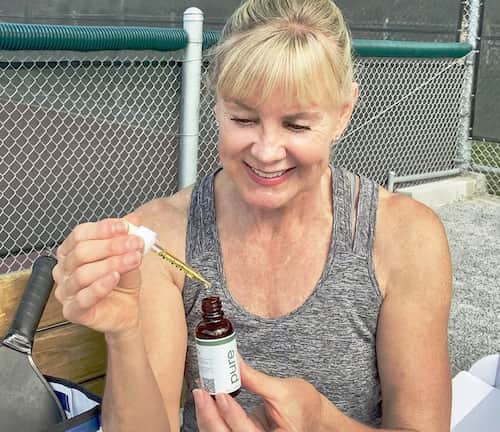
Future of Entourage Effect Research
Emerging Studies and Applications
The scientific community continues to explore the entourage effect with increasing sophistication. Recent research directions include mapping specific terpene-cannabinoid interactions and their effects on receptor systems. Scientists are developing technologies to track how compounds influence each other’s binding and metabolic properties, providing more precise understanding of synergistic mechanisms.
Another promising area involves developing targeted formulations with precise compound ratios for specific health conditions. Rather than general full-spectrum approaches, future products may contain carefully calibrated combinations of cannabinoids and terpenes designed for particular therapeutic goals. This precision approach could maximize benefits while minimizing unwanted effects.
Investigating how minor cannabinoids like CBG and THCV contribute to therapeutic outcomes represents another frontier in entourage research. As cultivation and extraction techniques improve, these previously understudied compounds are becoming more accessible for research. Early findings suggest they may play crucial roles in certain therapeutic applications when present alongside more abundant cannabinoids.
As cannabis research faces fewer restrictions, we can expect more robust clinical trials examining how compound combinations affect various health conditions. This research will likely lead to more personalized cannabis medicine, with products formulated for specific health goals.
Conclusion
The entourage effect represents a fascinating frontier in cannabis science, challenging the conventional pharmaceutical approach of isolated compounds. Understanding this synergistic interaction can help you make more informed decisions about CBD products and potentially enhance their effectiveness for your specific needs.
As research progresses, we’ll gain deeper insights into how cannabinoids, terpenes, and other compounds work together to produce therapeutic effects. For now, considering full or broad-spectrum products with diverse compound profiles offers the best opportunity to experience the entourage effect’s potential benefits.
Whether you’re exploring CBD for wellness maintenance or addressing specific health concerns, appreciating the complex interplay of cannabis compounds provides valuable context for your journey. The whole plant truly offers more than the sum of its parts—a principle that may revolutionize how we approach plant medicine in the coming years.


